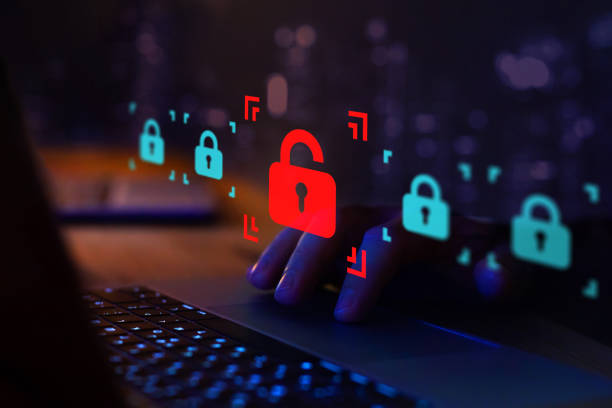How Weak Passwords Still Haunt Healthcare Cybersecurity In 2025
If you work in healthcare, you already know the feeling. A message pings your phone asking you to approve a sign-in you did not request. Someone on your team cannot log in because a shared password was changed without notice. A vendor account still works even though that contractor left months ago. In 2025, weak and reused passwords remain the quiet door that attackers walk through. The headlines talk about major data breaches and healthcare ransomware attacks in 2025, but the day-to-day reality is simple. Passwords are still the soft spot.
This guide explains exactly how attackers exploit passwords, why it still works, and what to change right now. Throughout, you will see how tools like Gini help teams spot risky logins, reduce password exposure, and move toward stronger sign-in methods with less stress. For leaders focused on cybersecurity in healthcare, the steps below align with healthcare cybersecurity best practices and reduce the chance of healthcare data breaches.
The Everyday Ways Attackers Break In
Attackers rarely start with a zero-day. They start with people and passwords. Here are the most common paths in 2025 for security breaches in healthcare and cybersecurity healthcare teams.
Credential stuffing
Attackers try lists of email and password pairs stolen from unrelated sites. If a clinician reused the same password, the attacker gets in. This is still one of the fastest paths to security breaches in healthcare.
Phishing and fake prompts
A lookalike login page, or a text that says your session has expired. The goal is to steal the password and any one-time code. Push bombing is common. The attacker spams approval prompts until someone taps accept. This is a frequent lead-in to healthcare cybersecurity incidents.
Exposed services and shared accounts
Remote access portals, vendor dashboards, or imaging consoles that allow password-only only. Shared accounts hide who did what. Password rotation is inconsistent. Default credentials still exist on some devices because no one changed them after installation, creating a password security breach.
Password reset abuse
Attackers use publicly available facts to answer weak security questions. They then reset the password and add their own second factor. These moves often escalate into healthcare cybersecurity breaches 2025 headlines.
Token theft on unmanaged devices
If someone signs in on a personal device and gets malware, session cookies can be stolen. The attacker bypasses the password and rides the session, turning a single mistake into cybersecurity breaches in 2025 stories.
If you map recent healthcare data breaches to these paths, you will find the same patterns repeating. Passwords are not the only cause of cybersecurity issues in healthcare, but they are still the easiest win for attackers who want quick access.
Security Breach Passwords, Explained In Simple Terms
Think about a password like a lock. Strength comes from length and randomness. A short complex string looks strong, but a long simple phrase can be stronger. Here is a practical way to reason about it for healthcare cybersecurity programs.
- 8 characters with symbols are usually under 50 bits of strength.
- 12 characters with mixed words often exceed 70 bits.
- 16 to 20-character passphrases can reach 90 bits or more for cybersecurity healthcare needs.
Simply, longer is better. Unique is required. Storage is the real challenge. That is why password managers and passphrases matter. When people can create and store long phrases without friction, they stop reusing short ones. That single habit reduces password security breach risk across cybersecurity for healthcare environments.
The Five Controls That Stop Password-Driven Attacks
Use this as a short plan you can roll out without breaking daily work. It aligns with healthcare cybersecurity best practices and improves cybersecurity in healthcare outcomes.
1) Phishing Resistant Multi-Factor For Everyone
Security keys, passkeys, or platform authenticators. These are based on FIDO standards and are far harder to trick than one-time codes by text. Start with admins and high-risk apps, then expand. This single change blocks credential stuffing even if the password leaks, cutting off many healthcare cyberattack paths.
2) Conditional Access And Device Trust
Do not treat every login the same. If a request comes from a new country, a new device, or a risky network, step up the check or block it. Trust devices that meet your baseline and reduce prompts on those devices. People approve real prompts more reliably when they see fewer fake ones. These moves strengthen cybersecurity in healthcare industry controls.
3) Kill Shared And Default Accounts
Shared accounts hide accountability and spread passwords by design. Replace them with named accounts and short-lived access with approvals. For devices that ship with defaults, change the password on day one and record the change. This shrinks the password security breach risk for healthcare cybersecurity teams.
4) Password Manager And Passphrases
Give people a manager who works on the phone and the desktop. Set the default to generate 16 to 20-character passphrases. Train teams to use different phrases for every site. This reduces reuse and cuts down on security breaches password risk across cybersecurity for healthcare apps.
5) Rapid Revocation And Recovery
Measure how long it takes to deactivate an account when someone leaves. Aim for minutes, not hours. Make recovery honest and simple. A clear recovery path reduces help desk friction and stops people from writing passwords on paper. Faster revocation can prevent data breaches in healthcare during handoffs.
How To Measure Progress Like A Pro
Leaders, auditors, and frontline teams need shared numbers. Track these nine signals each month to improve cybersecurity and healthcare hygiene.
- Per cent of sign-ins protected by phishing-resistant multi-factor.
- Number of shared accounts remaining.
- Mean time to disable a departing user.
- Per cent of privileged access using short-lived approvals.
- The manager found the password reuse rate.
- Number of default credentials eliminated on devices.
- Number of push-based approvals per user per week.
- High-risk sign-ins blocked by conditional access.
- Time from detection to password reset for confirmed compromise.
These are simple to gather and tell a clear story about cyber healthcare maturity and help prevent healthcare cybersecurity incidents.
Attack Walkthrough. From Password To Breach In Healthcare
Here is a realistic chain that teams still see in 2025 during cybersecurity breaches 2025 incidents.
- An attacker finds a clinician's email and a reused password on a public list.
- The remote portal allows password-only sign-in.
- The attacker signs in, creates a forwarding rule in email, and searches for invoices and payment contacts.
- They use that information to send a believable message that changes routing for a payment.
- Money moves. Logs show a normal sign-in. No malware was needed.
- Later, the same access is used to pull files from storage and threaten a leak.
- The incident is reported as one of many healthcare data breaches that year.
This is why cybersecurity is important for the healthcare industry is not an abstract question. Identity controls protect trust, revenue flow, and daily operations for cybersecurity healthcare programs.
Healthcare Cybersecurity Best Practices In Password Land
Use these patterns in your standards and runbooks for healthcare cybersecurity.
- Require phishing-resistant multi-factor for admins, email, VPN, remote access, and all critical apps.
- Require a password manager for everyone.
- Set the default passphrase length to 16 or more.
- Block password reuse by policy in the manager.
- Remove SMS codes where possible. Use authenticator apps or passkeys for cybersecurity in healthcare teams.
- Block legacy protocols that bypass modern checks.
- Enforce conditional access on location, device health, and risk.
- Remove shared accounts. Use named accounts plus approvals.
- Put vendor access behind a broker with monitoring.
- Log all admin actions and review weekly to reduce healthcare cybersecurity surprises.
Written. If an attacker steals one password, they should still fail.
How Gini Helps You Move Faster With Less Stress
You can do everything above by hand, but most teams do better with a safety net. Gini helps by watching for suspicious sign-ins, unusual patterns, and signs of cybersecurity breaches in 2025 activity. You get clear alerts and simple next steps. You can also invite a trusted contact to review alerts so important decisions do not sit on one person’s shoulders. Visit Gini to see how teams use Gini to cut noise and act faster when it matters in cybersecurity for healthcare programs.





